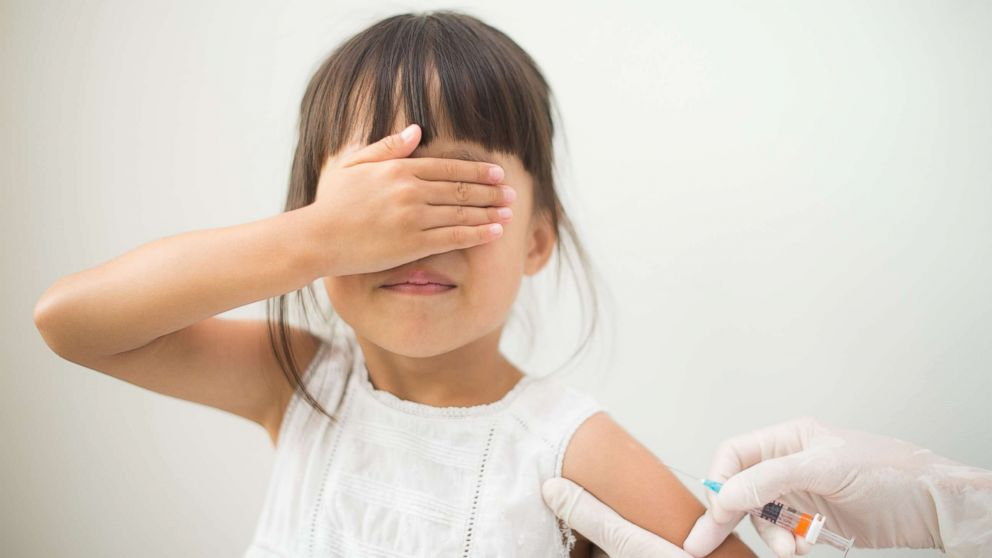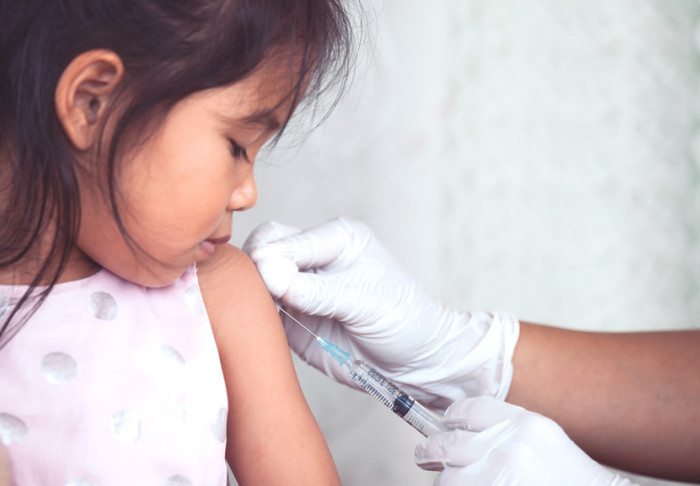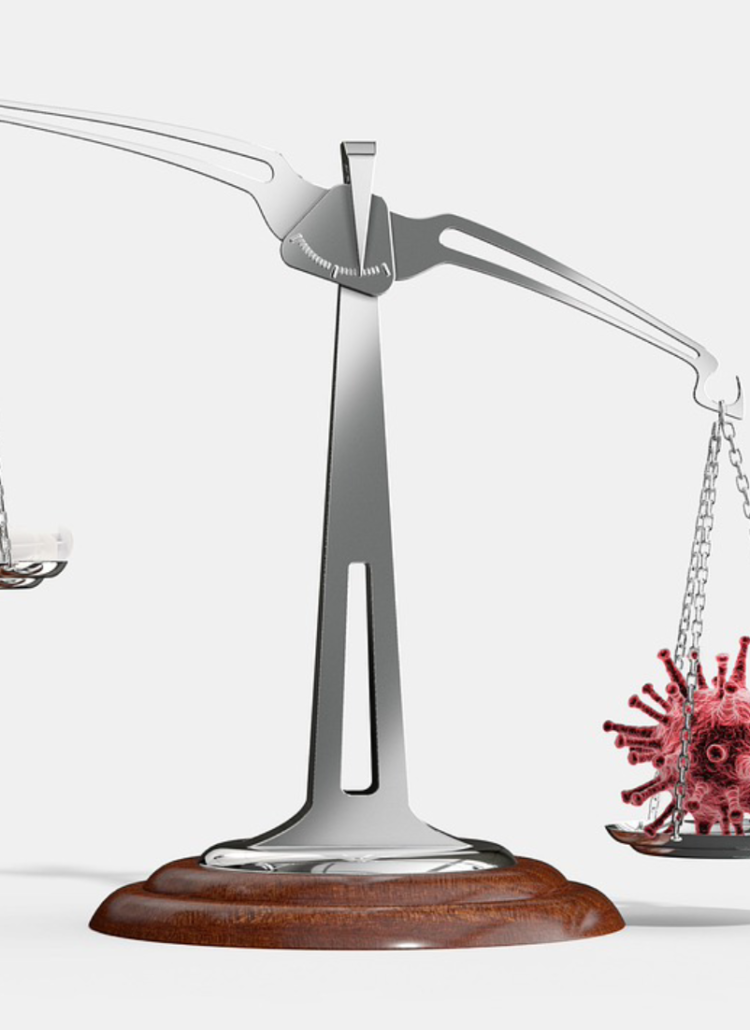The balance of harms and benefit of the mRNA vaccines is not as clear in kids. What are the risks vs benefits of vaccinating kids?

When the COVID-19 mRNA vaccines were rolled out for adults in late 2020, it was considered a triumph of science. And rightfully so, because scientists were able to achieve a safe and effective vaccine in record time. Better still, the mRNA vaccines have been given to hundreds of millions of adults with minimal adverse effects emerging. So, it is undeniable that there is a real benefit in vaccinating adults. With its success in adults, the U.S. Food and Drug Administration (FDA) recently authorized the use of the COVID-19 mRNA vaccines for kids ages 5 to 11. So, the question is: what are the risks vs benefits of vaccinating kids?
This is an important question to ask. The reason being is because a real safety signal of myocarditis arose from vaccinating kids ages 12 to 15. So, it is not inconceivable that the mRNA vaccines may pose a risk to the younger kids as well.
So, let’s have an informed conversation about the COVID-19 mRNA vaccines and the evidence on vaccinating kids.
Purpose of this Post
Before I dive into the evidence, I have written extensively on how mRNA vaccines work, the evidence on COVID-19 mRNA vaccine efficacy, and mRNA vaccine safety in pregnancy and lactation.
Next, the purpose of this post is not to convince anyone to make a decision toward one way or another. My goal here is to provide the evidence so that you can make an informed decision for your child. Because only you can make a decision that is best for you, your child, and your family.
Lastly, I want to point out that when it comes to vaccinating young kids who are already at low risk from COVID-19, parents should be allowed to weigh the vaccine decision without any pressure, negativity, fear, or shame.
So, with that said, let’s look at the evidence on vaccinating kids.
Authorize COVID-19 mRNA Vaccine For Vulnerable Kids
It is undeniable that the mRNA is effective at preventing severe illness from COVID-19 in vulnerable populations. Even against the more contagious Delta variant, though a bit less effective. As such, the vaccines should most definitely be an available option for a certain subset of kids. Kids, such as, those who are immunocompromised, or those who have leukemia, diabetes, obesity, or lung disease, etc. Because for kids in these categories, getting COVID-19 puts them at a higher risk of severe infection and/or hospitalization. So, making the vaccine available for kids in these categories is definitely necessary.
But what about the broader population of kids who are not in any of these categories? Kids who are at low risk for severe infection or hospitalization from COVID-19? Because for these kids, the balance of harms and benefits that the mRNA vaccines offer is not as clear.

Let me explain why the vaccine decision for young healthy kids may be more nuanced and complicated than it is for adults.
The Clinical Trials The FDA Is Hanging Their Hats On
After the successful rollout of the mRNA vaccines for adults, scientists at Pfizer conducted two additional clinical trials. One of the trials involved just over 2,200 kids ages 12 to 15. All kids in the trial received the full adult dose (30 ug) of Pfizer/BioNTech’s mRNA vaccine. And the more recent trial involving about 3,200 kids 5 to 11 years of age. All of whom received 1/3 of the adult dose (10 ug). (Note, only the press release for this second trial is available at the time of writing this post.) After these trials, Pfizer reported that both trials were “positive” trials. The issues with labeling these trials as “positive” are two-fold.
1. Non-Inferiority Trial Design
First, Pfizer conducted what is called a non-inferiority trial. Which was conducted to test that the mRNA vaccine is not worse in kids (12 to 15 years) than in adults. Put more simply, the goal (or primary endpoint) of this trial is to ensure that when kids are given the mRNA vaccine, they are not producing less antibodies against the coronavirus than adults given the same vaccine. Yes, this is an important measure. Because, at a minimum, we need to know that the mRNA vaccine can generate antibodies against the spike protein. (I have discussed the importance of an immune response against the spike proteins here.). And so, generating antibodies is a necessary prerequisite to showing immunity against the coronavirus.
However, generating antibodies does not necessarily translate to an observable clinical outcome. What I mean is that these trials did not look at whether or not the mRNA vaccine is effective at reducing the chance of getting infected and/or the severity of COVID-19 infection in children.
Whereas in the adult randomized controlled trials, the endpoints were to test whether the mRNA vaccines reduce the chance of COVID-19 infection. As well as, to test whether the mRNA vaccine can reduce the severity of COVID-19, if infected. These are relevant clinical outcomes to show vaccine efficacy.
Now, it’s not to say that non-inferiority trials are bad, they have a place. However, since kids are at such low risk of severe COVID-19 illness (stats from Health Canada), we want to be certain that vaccinating kids will have a net benefit.
2. Not Enough Kids Means Not An Adequately Powered Study
Second, Pfizer had to conduct a non-inferiority trial looking at antibodies as a primary endpoint rather than a clinical outcome. The reason is because so few kids get sick with symptomatic COVID-19. Meaning, there would not have been enough kids to enrol in the study if the trial was to measured whether the mRNA vaccine reduces symptoms or severity of COVID-19. In clinical trial statistics, this is referred to as an inadequately powered study. More importantly, as we have learned in the 12 to 15 year-old trial, 2,200 kids enrolled were not enough to inform the safety of the mRNA vaccine. The safety signal of myocarditis only arose after thousands of kids outside the trial were given the mRNA vaccine. And so, presumably, 3,200 kids would not be enough to detect any rare safety signals either.
As such, much of this enthusiasm over these trial results has gone a little bit ahead of the evidence. There are a lot of things we still don’t know about the safety of mRNA vaccines in kids. And these are things we certainly need to know.
Increased Risk of Myocarditis In Kids

In February, Israel reported an increased risk of post-vaccine myocarditis in young people between 12 to 30 years of age. Myocarditis is a condition of the heart in which the heart muscle becomes inflamed. This adverse event seemed to affect mostly young boys. Typically, ~4 days after the second dose of the mRNA vaccine.
Initially, myocarditis was thought to be an extremely rare adverse event. However, the incidence of myocarditis has been determined to be between 1 in 3,000 to 1 in 6,800 kids. In a preprint by a cardiologist estimates post-vaccine myocarditis to be roughly 1 in 6,800 vaccinated kids. And the FDA have made public their estimates by age groups. The rate of myocarditis in boys aged 12 to 15 is 1 in 5,600. And the rate in boys aged 16 to 18 is 1 in 5,100. So, it appears these estimates are close to the actual incidence rate of vaccine-induced myocarditis. Thus, this adverse event appears not to be as infrequent as initially thought.
It is important to keep this vaccine-induced myocarditis incidence rate in kids in mind. To add some perspective, the rate of kids who are hospitalized due to COVID-19 is 40 per million (1 in 25,000 kids). And the rate of COVID-19-related deaths in kids is 5 per million (1 in 200,000 kids).
Age-Gradient Of Risk With COVID-19
Yes, COVID-19 can potentially cause severe illness in kids and should be taken seriously. But it is important to understand that there is a steep age-gradient of risk with COVID-19. Meaning that, simply being older significantly increases your risk of severe illness. The risk of death in adults with COVID-19 is 3,000 per million (1 in 330). Whereas it is significantly lower in kids. Therefore, kids are relatively protected from the severity of COVID-19 simply by being younger. Whereas the risk of vaccine-induced myocarditis is evidenced to be more prevalent in younger people than in older adults.
How Can Myocarditis Be “Mild”?
When reports emerged linking mRNA vaccines to myocarditis in kids, ardent proponents of the mRNA vaccines were quick to say that cases of vaccine-induced myocarditis are “mild”. Again, myocarditis is inflammation of the heart muscle.
How can inflammation of the heart in a child ever be ‘mild’?! Calling it “mild myocarditis” reminds of the saying about minor surgery. “Minor surgery is surgery done on someone else; mild myocarditis is something that happens to someone else’s child.”
Yes, most cases of post-vaccine myocarditis in kids have been reported to resolve without any major issues. The thing is, side effects to either a drug or vaccine will always have some distribution of severity. Meaning that, some kids will experience minimal side effects. But there will be some kids who experience side effects that are more concerning. And sometimes, it can cause severe decline in heart function, require hospitalization, artificial heart pumps, or even heart transplants. And in some cases, it can even be fatal.
Therefore, no one should be downplaying myocarditis. Because myocarditis in a child, from any cause, can have profound consequences.
Alternative Vaccination Options and Strategies
Instead, perhaps it may be prudent to suggest alternative options when the vaccine decision is not as clear cut in kids. For example, delaying vaccination in low-risk kids, continuing to social distance and wear a mask. Or offer non-mRNA vaccines, such as the AstraZeneca or Johnson & Johnson adenovirus vaccines. Or use smaller doses of the vaccine, more widely spaced doses, or a single dose regimen for young kids. These alternative vaccination options are what other nations are adopting to reduce the chance of vaccine-induced myocarditis.
Peer Nations Have Paused COVID-19 mRNA Vaccine in Kids
Sweden and Denmark have paused the use of mRNA vaccines for people born in 1991 and later. Additionally, United Kingdom, Hong Kong, and Norway have adopted a one-dose dosing strategy for people under the age of 18. With the one-dose strategy, ostensibly, you will still get most of the benefit of vaccine protection while mitigating a large percentage of the downsides. Other nations are also trying longer dosing strategies instead of 3 or 4 weeks apart. Opting to space the first and second dose ~12 weeks apart to minimize the risk of vaccine-induced myocarditis.
The point here is that, there needs to be more nuanced discussions and alternative options with mRNA vaccines in kids. We need to understand where uncertainty lies. Because the balance of harms and benefits is not as blatantly clear for this particular age group as it is for adults.
The ‘Societal-Good’ Argument

“What about societal good?” is a question that is on many people’s mind. Meaning, kids should get the vaccine to help do their part in society.
The thoughts I have about this argument are:
- First, these mRNA vaccines are quite effective at preventing severe COVID-19 that people do not need to depend on another for protection. Your protection from the coronavirus only requires you to get vaccinated. Even with the more contagious, but not more deadly, Delta variant.
- Second, the issue with the ‘societal-good’ argument is that myocarditis is a real and concerning safety signal from the mRNA vaccines in the younger age groups. It seems unconscionable to expose young kids to a known risk (myocarditis) of the mRNA vaccines for an unknown benefit (decrease COVID-19 cases) to society. At least, until we have more data regarding the incidence of myocarditis in this age group.
From the beginning of this pandemic, the consensus has been, and still is, that kids have a low risk of severe COVID-19 infection. Yes, it is not zero risk. However, the risk is low enough that kids are thought not to be significant vectors of the disease to pose any appreciable harm to society.
The Bottom Line
mRNA Vaccines Are A Triumph Of Science

There is no doubt these mRNA vaccines are an important good. Particularly for older adults (>50 years old), immunocompromised and/or those with underlying health conditions of all age groups. There is a clear benefit for people in these specific categories to get the mRNA vaccines. That is not to say other people outside these groups won’t benefit from vaccination. However, as good as these vaccines are, it is important not to let the enthusiasm come at the price of a total lack of critical thinking. Even if something is good, it doesn’t mean you cannot keep an eye on adverse effects.
It is not diminishing an accomplishment to talk about adverse effects. If anything, not talking about it makes people a little reluctant.
Level Of Risk Tolerance Is Individual
The balance of harm versus benefit is not as clear cut when it comes to vaccinating kids as it is in adults and vulnerable populations. Perhaps, adopting a more humble and nuanced approach to vaccination in low-risk young people is a more reasonable way to move forward.
The decision to vaccinate or not to vaccinate a child will always be about weighing the risks and benefits. There is never going to be “zero risk”. There’s a risk of COVID-19 if a child does not get the vaccine. There’s a risk of myocarditis if a child does get the mRNA vaccine.
But this is a decision parents must be allowed to make for their own child and family based on the level of risk they are comfortable with and willing to tolerate. Whatever their risk tolerance level is, it needs to be their decision to make without any fear or shame.





